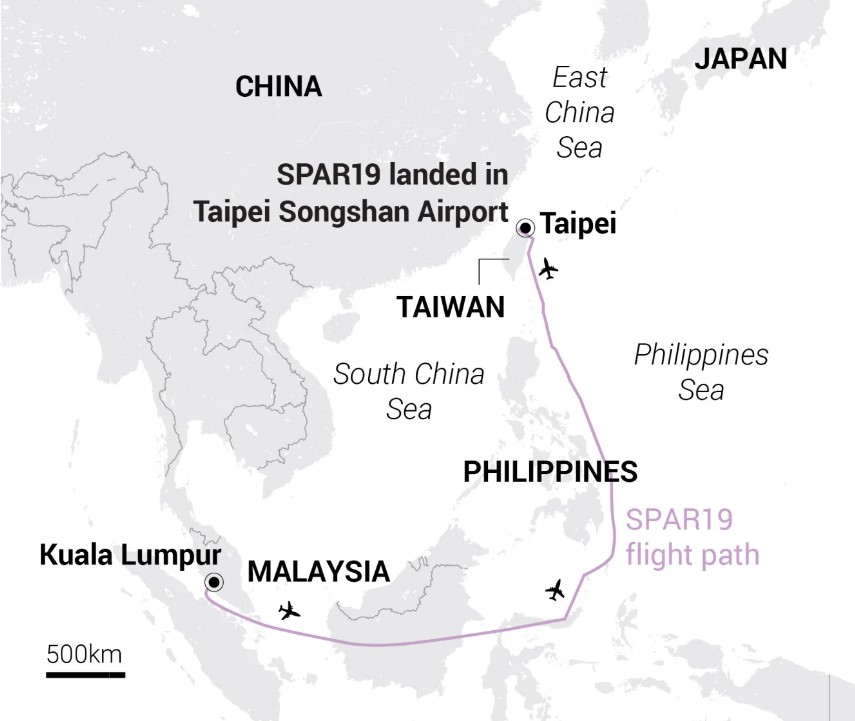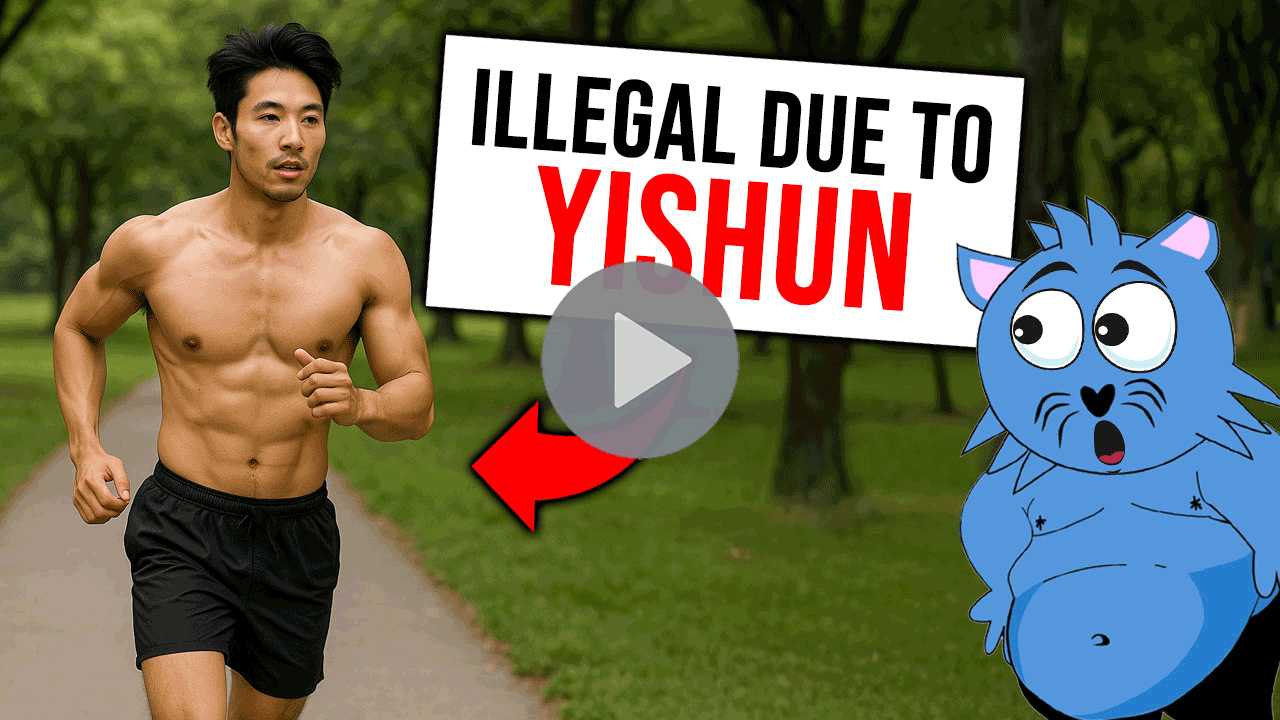When US House of Representatives Speaker Nancy Pelosi set off on her Asia Tour with a delegation of six other lawmakers on Sunday (31 Jul), her itinerary included visits to Singapore, Malaysia, South Korea and Japan.
Taiwan was conspicuously absent from the list.
Despite the numerous warnings that China issued, Speaker Pelosi continues to defy Beijing, as she has for her entire congressional career.
On Tuesday (2 Aug), Speaker Pelosi disembarked from a US Air Force transport plane at Songshan Airport in downtown Taipei, thus becoming the highest-ranking US official to step on the self-ruled island for a diplomatic trip in 25 years.
Pelosi’s Declaration of Support for Taiwan
True to form, Speaker Pelosi comes out swinging moments after she makes landfall in Taiwan.
Speaker Pelosi and her delegation were greeted by Taiwan’s foreign minister, Joseph Wu, as well as Sandra Oudkirk, the top US representative in Taiwan.
“Our delegation’s visit to Taiwan honours America’s unwavering commitment to supporting Taiwan’s vibrant Democracy,” said Pelosi, adding that the main objective of their discussions is to reaffirm US support for their partner and to promote their shared interests.
Of course, being a long-standing vocal critic of China, Speaker Pelosi makes a subtle jab at the Beijing government.

“America’s solidarity with the 23 million people of Taiwan is more important today than ever, as the world faces a choice between autocracy and democracy.”
In another article published in the Washington Post newspaper, Speaker Pelosi also wrote that Taiwan’s “robust democracy… is under threat”.
That being said, Speaker Pelosi will be meeting Taiwan President Tsai Ing-Wen on Wednesday morning (3 Aug), and the two will be having lunch together.
Four other sources have mentioned that Pelosi will be visiting activists who are outspoken about China’s human rights record as well.
China’s Targeted Military Operations
Just as many analysts and scholars have predicted, China proceeded to fire warning shots once they noticed Speaker Pelosi’s flight plans.
You may think this is an exaggeration.
It really isn’t.
In order to avoid any mid-air conflicts, Flight SPAR19, which was carrying the Democratic House Speaker and her delegation, departed from Kuala Lumpur 3:42pm Tuesday and headed east towards Borneo, curving around the Philippines and skirting the South China Sea to finally land in Taiwan.

Flightradar24 recorded the US Air Force Boeing C-40 entering Taiwan’s air identification zone from the southwestern side at around 10pm.
If it was a normal non-stop flight from Kuala Lumpur to Taipei City, it would have taken 4 hours and 55 minutes at most.
Minutes later, the Chinese Army launched an unknown number of Su-35 multi-role fighter jets across the Taiwan Strait. Their intended mission is unknown, but easy to guess.
(Intimidation.)
The Taiwanese defence ministry later confirmed that 21 Chinese military planes have entered Taiwan’s air defence zone. It flew close to the media line dividing the Taiwan Strait, but it did not cross over.
Furthermore, a number of Chinese warships have sailed near the unofficial dividing line since Monday and have moored there
Within an hour of the plane’s touchdown, the People’s Liberation Army (PLA) announced that it will be conducting a series of live-fire, joint military drills in the air and at sea around Taiwan later this week.
There will also be test launches of conventional missiles in the sea east of Taiwan.
Well, countries that resort to large phallic warheads tend to have something to prove.
Beijing’s Warning Statement
As one can imagine, Beijing was pissed about Speaker Pelosi’s defiant visit.
Beijing lambasted the trip immediately, claiming that it violated the One-China policy that Washington had promised to uphold and that US President Joe Biden had “the responsibility to stop such visits.”
The Beijing foreign ministry claimed that the United States has been trying to use Taiwan to “contain China”.
It even went as far as declaring that Pelosi’s visit has a severe impact on the political foundations between China and the US, and that it seriously infringes upon China’s sovereignty and territorial integrity.
It adds, “[The US] constantly distorts, obscures and hollows out the one-China principle, steps up its official exchanges with Taiwan, and emboldens ‘Taiwan independence’ separatist activities.”
The Beijing foreign ministry asserts that Speaker Pelosi’s visit is “playing with fire” which is “extremely dangerous”.
If that wasn’t ominous enough, the ministry added, “Those who play with fire will perish with it”.
In the grander scheme of things though, the Beijing government, or more precisely, President Xi Jinping’s aggressive response makes sense.
Later this year, Xi is trying for an unprecedented third term as President, so he needs all the support he can get, and he cannot afford to appear weak against the US.
Otherwise, his competitors will take the opportunity to reason why he’s not fit for the leadership position.
Join our Telegram channel for more entertaining and informative articles at https://t.me/goodyfeedsg or download the Goody Feed app here: https://goodyfeed.com/app/
The White House’s Response
On the other hand, the White House has responded by saying that Washington has not changed its position on Taiwan.
Speaker Pelosi also denies having contradicted the Washington policy which has been guided by the Taiwan Relations Acts of 1979, the three US-China Joint Communiques and the Six Assurances.
Yes, the Chinese version of the 1979 communique—which marks the normalisation of US-China relations—translates “acknowledge” as “cheng ren” (承认), a phrase that implies acceptance of agreement.
However, some US officials have maintained that the stance that “acknowledgement” does not necessarily equate to the acceptance of the Chinese position.
Moreover, Washington’s commitment to the One-China policy and the current status quo is premised on China seeking a peaceful solution to cross-strait tensions, ergo, it does not condone any reunification that is achieved through forceful means.
The National Security Council spokesperson John Kirby explains, “We’ve said that we oppose any unilateral changes to the status quo from either side. We said we do not support Taiwan independence.”
In simpler terms, the US has a non-intervention protocol as long as China doesn’t invade Taiwan in attempt to reunify the self-ruled island with the mainland.
But the US is also strategically ambiguous in the sense that it has not clarified whether it will go to Taiwan’s defence if it was attacked.
The Taiwan Relations Act merely authorises the continued “commercial, cultural, and other relations” between the people of the US and Taiwan to sustain its “robust and unofficial relationship” in the wake of US establishing diplomatic ties with the People’s Republic of China (PRC).
By technicality, it also puts the US under the obligation to provide Taiwan with weapons and services to defend itself and to maintain the ability to resist and defend itself against any use of force directed at the island.
This is the current status quo; arming Taiwan for self-defence can’t be considered as a threat that escalates military tension because it wasn’t disallowed in the books.
As a matter of fact, in the Six Assurances made in 1982, it has been conveyed that the US has not agreed to set an end date for the arm sales to Taiwan, nor is it beholden to consult with the PRC over this matter.
The US does not have to care about Beijing’s opposition to the arms sale, no matter how loud their protests get.
The US has not been trusted with the duty of exerting pressure on Taipei to enter into negotiations with Beijing either.
For the same reasons, the National Security Council spokesman openly voices his concerns over the Chinese government’s (over) reaction.
Kirby said, “There’s no need for that. There’s no justification to turn this into a crisis.”
Meanwhile, the other politicians—whether it’s the Democrats or the Republicans—have shown bipartisan support towards Speaker Pelosi’s visit.
They take joy in spiting China for the sake of spiting China.
In the words of former Republican speaker Newt Gingrinch, he said, “I would say she absolutely has to go now. She cannot allow the Chinese communist dictatorship to think that it can bully an American Speaker of the House.”
Taiwan’s Response
Predictably, the Taiwanese are split into two sides.
Dozens of pro-unification supporters gathered outside her hotel earlier this morning, protesting that her visit will only bring disaster to the island.
They aren’t exactly wrong, because Taiwan will be bearing the consequences of China’s heightened aggression.
The pro-unification supporters appear to be in the minority though.
When Speaker Pelosi and her delegation drove towards their designated hotel on Tuesday night, a horde of supporters ran towards the black vehicles that were surrounded by police cars flashing blue and red light, cheering outstretched arms and camera lights on.
The tallest building in Taiwan, Taipei 101, was lit up with the following messages: “Welcome to Taiwan”, “Speaker Pelosi” and “Taiwan (heart) USA”.
Nancy Pelosi’s Decades of Defying China
For Nancy Pelosi, this visit is significant for herself too.
Speaker Pelosi has always been an unapologetic and persistent critic of the Chinese Communist Party (CCP), even if it put her at odds with her own Democratic party at times.
Her crusade against China began in 1991, two years after the horrific Tiananmen Square massacre and four years into her congressional career.
While she was visiting Beijing on delegation, she broke away with two other lawmakers to visit Tiananmen Square, without permission.
While they were there, they held up a hand-painted banner that stated: “To those who died for democracy in China”.
She had to flee the location afterwards, but several journalists who covered the event were arrested by the Chinese police.
Later on, she led congressional delegations—that’s right, plural—to Dharamshala, home of the exiled Tibetan parliament to meet the Dalai Lama and speak out against China’s oppression of Tibet.
When Democratic president Bill Clinton pursued closer relations with Beijing in the 1990s, she didn’t hesitate to take him to task.
She read him the figurative riot act, saying that Clinton “was wrong in trying to relegate the Tiananmen Square tragedy to the realm of ‘past action’” and that he had missed the chance to associate himself with the reformers.
Pelosi was also a regular critic of Clinton after he granted China preferential trading status without insisting on any human rights improvement.
When Clinton claimed that democracy was starting to flourish in China, she excoriated him by highlighting the punishments suffered by those who expressed their political and religious beliefs.
Pelosi was only further vindicated in her views when the increasing authoritarian nature of the Chinese regime became more evident.
In May of last year, she led the diplomatic boycott of the Beijing Olympics.
“What moral authority do you have to speak about human rights any place in the world if you’re willing to pay your respects to the Chinese government while they commit genocide?” she questioned.
Strong words, but it worked, because the Biden administration pulled out any officials who were originally attending the Games.
Therefore, her decision to stick to the guns and visit Taiwan isn’t surprising in the least.
If the Democrats lose control over the House of Representatives come the midterm elections in November, this is and will be her last chance to openly sneer at Beijing.
The 82-year-old politician is certainly taking every opportunity she has at hand.
Read Also:
- Everything About Nancy Pelosi’s Unconfirmed Taiwan Visit That Might Spark WW3
- Private Plane Crashed Just Next to a House in M’sia; 1 Person Survived the Crash
- Pan Lingling & Xiang Yun Selling ‘Healthier’ Mooncakes at $168 Per Box
Featured Image: Twitter (@SpeakerPelosi)
Would you be jailed for being half-naked in public? Well, the answer will shock you. Seriously. Watch this to the end and you'll understand:



